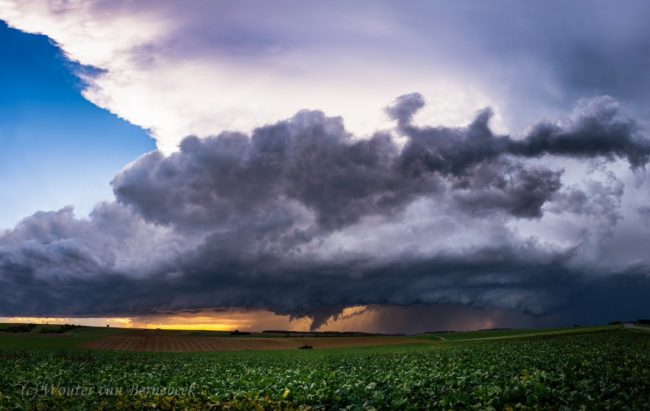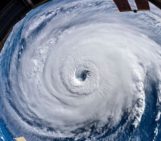
On October 23 2022, a tornado outbreak occurred in France, causing extensive damages. Tornadoes in France are a relatively rare phenomenon, even more so in the second half of October. This weather phenomenon is linked to intense thunderstorms, and it is difficult to predict because it is very localized. Will global warming make this weather more frequent or intense?
A thundercloud that grows visibly, violent winds and, in a few moments, a tornado descends on the village of Bihucourt (Pas-de-Calais). But how is a tornado formed? A tornado is a violently rotating column of air in contact with the ground and descending from the base of a towering cumulus cloud. Tornado formation is caused by the lifting and stretching of environmental and/or storm-induced vorticity that tightens into an intense vortex. Is their occurrence or frequency changing because of global warming? We discuss this issue with Fabio d’Andrea, Flavio Pons and Davide Faranda from the Institut Pierre-Simon Laplace: “One thing we know for sure is that tornadoes are linked to intense thunderstorms, fuelled by hot, humid air. Climate change means more heat and moisture in the atmosphere, and therefore more energy for thunderstorms,” says Faranda.
Lack of documentation, difficult forecasts…Fabio D’Andrea deplores it: “We don’t have enough elements to understand the link between tornadoes and global warming. It is impossible to say that the violent phenomena that hit Amiens (Somme) and Bihucourt (Pas-de-Calais) on Sunday 23 October are a consequence of global warming. However, some hypotheses suggest the formation of more intense whirlwinds in the years to come.
How do these violent phenomena form? “Tornadoes are associated with very intense and rotating thunderstorms, called supercells. Supercells form thanks to the combination of a strong temperature difference between the surface and higher altitudes, and wind of increasing intensity with altitude. The change in wind generates a horizontal vortex, while the vertical temperature difference triggers thunderstorms. The ascending air inside the thunderstorm lifts and stretches the horizontal vortex, which starts rotating faster. Then, hot air and humidity near the ground act like a fuel that sustains and intensifies the storm.” Says Flavio Pons.
The frequency and intensity of these vortices, going from about 100 km/h for the weakest to almost unfathomable wind speeds, could then increase with global warming: “We expect more frequent and more extreme conditions favorable to high intensity thunderstorms, which then makes the formation of intense tornadoes more likely.”, says Faranda. However, we do not know yet whether climate change will somehow influence other important elements, such as the behavior of high-altitude winds, which play an important role in generating the vortices. While it is impossible for researchers to predict a greater frequency or intensity of tornadoes in France, global warming is likely to provide “more favorable conditions for their development”, confirms D’Andrea.
There is still a gray area around the predictions of the phenomenon. The Somme, the Nord, the Pas-de-Calais and the Eure were placed on Sunday 23 October under “yellow vigilance” for thunderstorms by Météo France, while 20 other departments were under “orange” alert. “Predicting tornadoes is a major limitation of meteorological and climatological models,” says Faranda. While it is therefore possible for forecasters to say that there will be fertile ground for tornadoes, it is impossible to predict their location and trajectory: their size is well below model resolution, and their formation is linked to incalculable conditions, such as the structure of a single thunderstorm cell and its interaction with other storms.
Another drawback is that tornadoes are not visible on satellite images. They can only be observed by eyewitnesses or Doppler radars. As these radars have only been in existence for about three decades in the US, documentation on the phenomenon is limited and makes it difficult to carry out more in-depth studies on a possible link with global warming. Outside of the US and before the 90s, tornado reports are strongly correlated to population density, and therefore affected by observational bias.
“On 19 August 1845, a tornado had already killed about 70 people in the north of Rouen,” says Faranda. If we know about this tornado, it is only “thanks” to its human toll. But these phenomena are often too localized and too small to be listed. “Tornadoes have always existed in France and Europe, but today we pay more attention to their formation and they are more visible thanks to our smartphones,” explains the researcher. It is therefore impossible, without knowing the number of tornadoes in recent years in France, to measure the evolution of their frequency.



